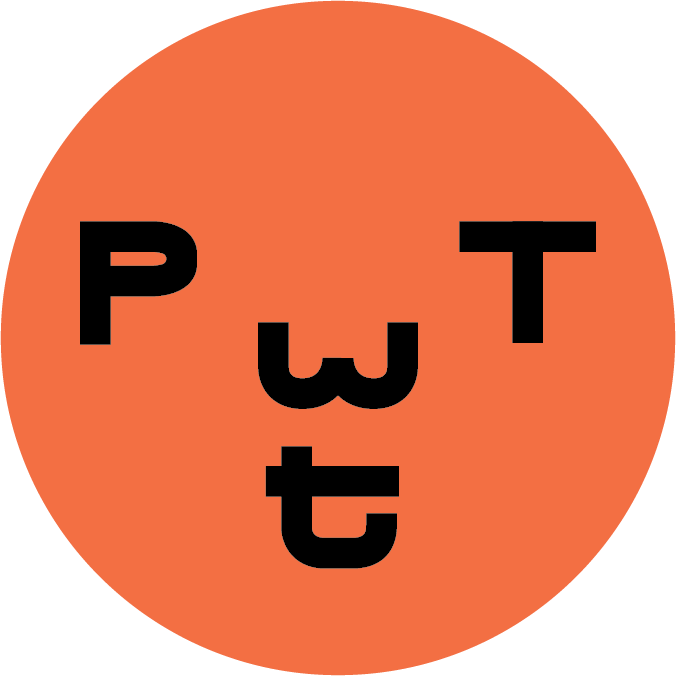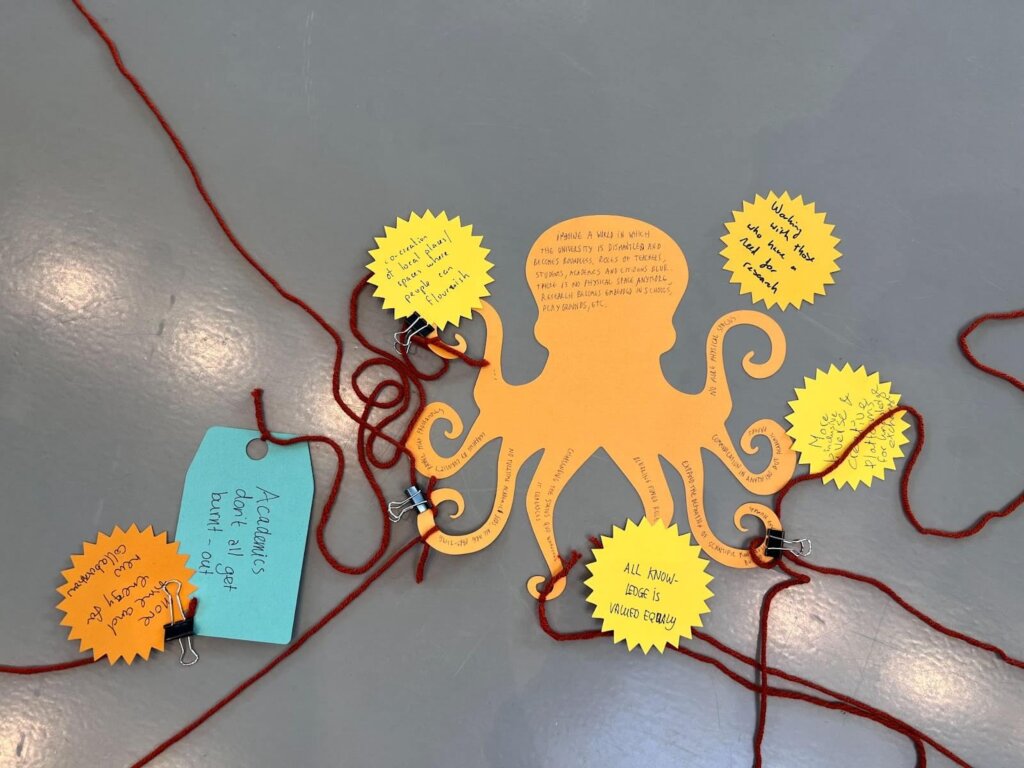
Future Webs
Explore opportunities for change by interweaving imagined futures.
A 60–120 minute activity for any number of people
Is this the activity for your group?
- 60-120 minutes duration
- Any number of people
- Doesn’t need a facilitator (although for larger groups, a facilitator would be useful for time management)
- Either Low or High setup (low setup can be done with minimal materials or digitally. The high set up is a more elaborate version with specially shaped cards and colours of wool or string)
- Either Low or Medium difficulty (can be done in a way that requires specialist knowledge, but does not require this)
- High imaginative load (lots of ideas needed!)
- Medium trust required (collaborative speculation, sharing views and values)
Why play this?
- Collective Imagining (Freedom to experiment with different futures)
- Staying With The Trouble (Imagining consequences and issues in future worlds)
You might also find that Future Webs supports other purposes:
- Embracing Ambiguity (Imagining aspects of incomplete and ambiguous futures)
- Surfacing worldviews (Related to visions of desirable futures)
- Unmaking systems (Builds agency to resist and transform unjust systems)
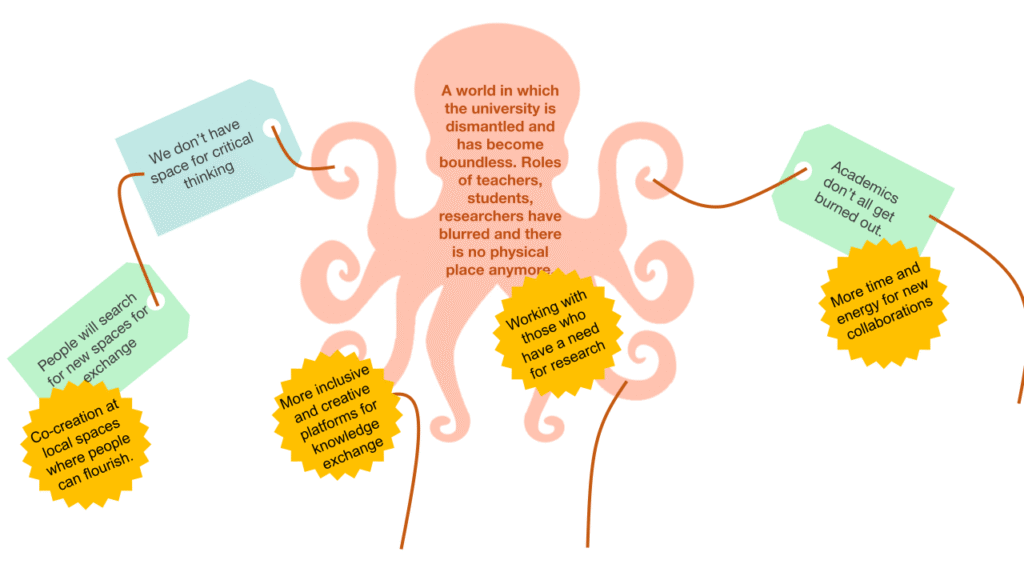
Notes for the organiser/facilitator
This activity can be customised to fit a specific event’s theme or topic by tailoring the examples of worlds presented to the participants in the step “Imagining 100 character worlds”.
In both described examples of the activity we used examples of worlds related to the setting of academia, which was closely related to the themes of the events. During our playtesting we experienced that it can also be useful to provide examples of worlds that are not directly clearly related to an event’s theme—for example, at the levels of broader societal, environmental, or technological change. Inspiring your participants with examples like, “Imagine a world with free, reliable public transport everywhere,” can serve as an engaging starting point for exploring the potential consequences and opportunities for new forms of collaborations in academia. We noticed that providing more “extreme” examples of 100 character worlds, inspired the participants to be more creative. Some other examples of worlds that you could show your participants: “Imagine a world where the public is always involved in early stages of technology development or innovation projects” or “Imagine a world in which physically showing something to someone is more important than oral or written communication”.
Please note: the examples you provide may prompt participants to question why the worlds are the way they are. It’s helpful to remind them not to dwell on this during the activity, but to focus on using the worlds as a starting point for coming up with consequences. If there are ‘why?’ issues raised that you think could be worthy of further exploration (e.g. in an education context), this could be done afterwards.
Components
This activity can be done in a very minimalistic version using e.g. a flipover sheet and markers or simple blank cards or within an online environment such as Miro.
You could also prepare the activity in a more deluxe version using different shapes of coloured paper that fit the theme of your activity (see pictures for examples).
- Pieces of yarn or string to connect the different types of notecards.
- Paper clips or binder clips
- Notecards in different colors and/or shapes to indicate what category a note belongs to (worlds, consequences and opportunities). Each group should have a minimum of one world notecard (and maybe some blank cards for draft versions), and each person should have at least 5 consequence and 5 opportunity note cards.
- Writing utensils
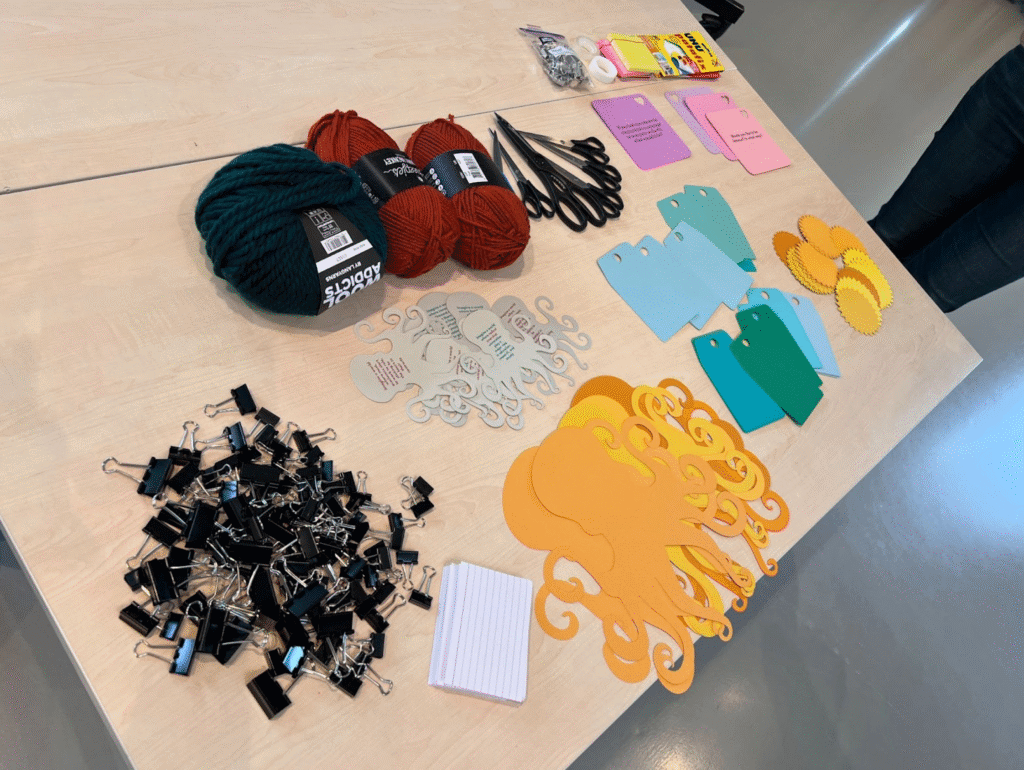
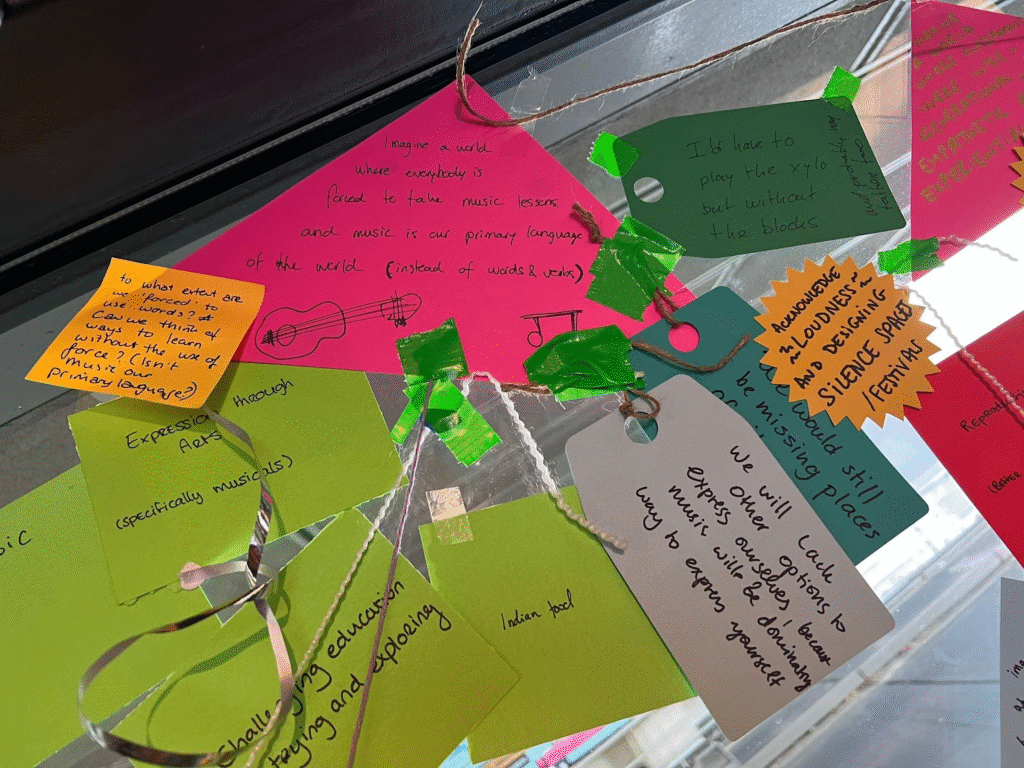
Examples of components used for 2 different versions of the Future Webs activity.
Background and objectives
This activity can be used to create imagined futures together and explore connections, consequences and opportunities in these co-created futures. The objective of the activity can vary from focussing on very open exploration of new ideas to identifying opportunities to unmake systems. The overarching theme or subject can be tailored to the event or target audience you are working with. Future webs was based on a combination of the Futures Wheel approach (Jerome Glenn, 1972) and Amy Twigger Holroyd’s Fashion Fictions (https://fashionfictions.org/).
The activity contains 3 main phases:
- Imagining 100 character worlds connected to a chosen theme or topic,
- imagining the consequences connected to these worlds (and connecting these consequences to each other)
- and identifying opportunities in these new worlds.
We describe two examples of how we applied the method to illustrate the steps and how you could tailor it to your own needs in more detail. Both examples include an activity that allows people to get to know each other first. We do recommend adding such an activity (using any approach you like) at the start.
Reflections from participants
Some quotes from the reflections at the end of the activity help illustrate the value that participants find in Future Webs:
“The physical aspect of it — I get that very little [in my day-to-day work]. I would like to have more physical experience in thinking, not all the time, but sometimes.”
“I really like that it’s not based on consensus, so you can talk about it. Think about the spaces that make sense, and think about the possibilities that can emerge from those spaces.“
“It’s like collective knowledge — co-creation”
“I think it kind of resembles how science works — because we were independently thinking of some new world, and then all of a sudden we also had the same idea pop up in several different places, which means that this is an idea which really needs to be implemented.”
“I have been in many futures, design thinking, whatever workshops… Some elements here are the same, but I like the connections. And often in sessions I have been in, you knew before what would come out… but here it’s unexpected.”
“What I really take away from this session — I have never, with the people in the room here, really had a visioning discussion. And I feel very invigorated that we can really be bold together. We are very willing to break down the structures as they are.”
Example 1: The Future of collaborations
Description of the purpose: A workshop at an event focused on exploring the potential and challenges of different futures of (interdisciplinary, transdisciplinary and more-than-human) collaborations in academia. By collectively imagining diverse futures and their potential impact on academic practices, participants identified opportunities to transform how we collaborate and what drives collaboration in the present (unmaking systems).
| Setup Tables were set up along the edges of the room to leave enough space in the middle to work on the floor later on. (A wall, window, or table surface can be used instead of the floor.) We placed post-its/blank paper for drafting the worlds and one Octopus-shaped card (related to the theme of the event) on which they could copy the world they wanted to share with the other groups. A bonding activity was done first by participants to get to know their groups. | |
| Imagining 100 character worlds (10-20 min) We provided each group with a few examples: “Imagine a world where hundreds of small experimental universities and colleges are created by communities” or “Imagine a world where radical anarchist universities play a major role in education, research and society” (See ‘Notes for facilitator for tips on how to phrase the examples’) We then asked the groups to create as many worlds as they wanted to (drafting them on post-it notes) and to pick one to share with the other teams. The teams wrote down their selected world description on an octopus-shaped card and left it in the centre of their table. | |
| Imagining consequences (15-20 min) We asked groups to go to another table by saying: You’ve bonded, you’ve created a world together, and now you’re thrown into another world. How will you collaborate in this new world? Groups were asked to add one consequence to the world they encountered at their table (connecting with rope / wool) and from there onward to move to another consequence and add another consequence, joining to others. | |
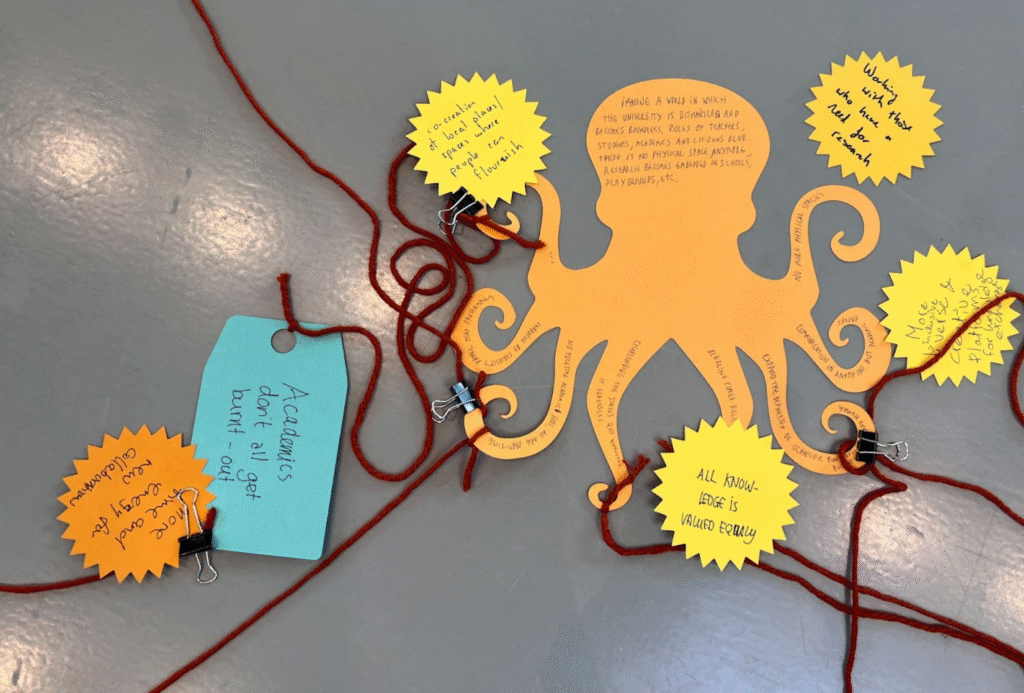 | Identifying opportunities (10-15 min) We asked people to, individually, add opportunities you see for collaboration or new project ideas. |
| Reflection (10-15 min) We invited participants to stand around the produced web and discussed the following questions together: – Wander around and look at what we made together. – Where could you see yourself thriving? – What stands out for you? Any patterns? – Could all of this be part of the same world? – What did you get out of this experience? And why? – What elements contributed? – How might this experience/results of this session connect to your work? |
